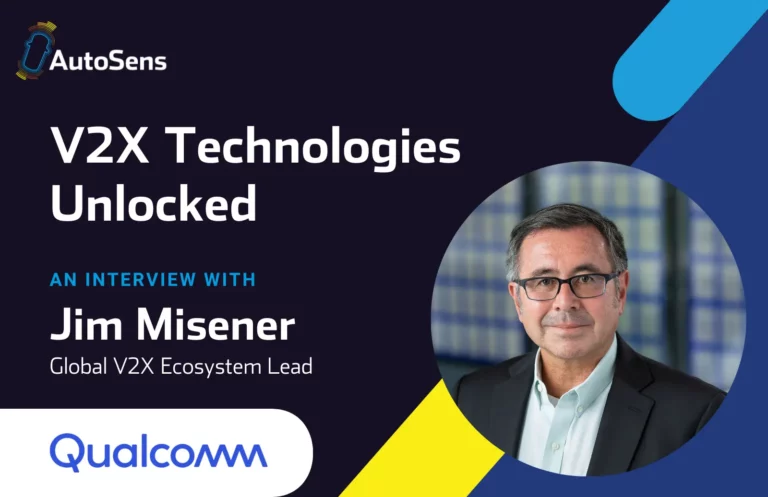 Varroc Lighting Systems (key member of the Varroc Group) is a premier developer and manufacturer of next-generation external lighting systems and vehicle control electronics for the automotive and two-wheeler industries.
Varroc Lighting Systems (key member of the Varroc Group) is a premier developer and manufacturer of next-generation external lighting systems and vehicle control electronics for the automotive and two-wheeler industries.
In this interview with Varroc we uncover their need to adapt and meet the needs of a rapidly changing industry; as well as understanding how lighting will continue to play an important role on the vehicle and its impact on how vehicles of the future interact with other vehicles, pedestrians, and traffic infrastructures. One import message continues to be that it’s impossible for anyone in the industry to be successful without forming good relationships and working collaboratively to develop new solutions.
Headquartered in Plymouth, Michigan, U.S., Varroc has more than 8,000 employees worldwide with operations in in 17 countries and capabilities on every continent where vehicles are produced. Paul Lyon, Manager of ADAS Systems for Varroc Lighting Systems will be speaking on the expert agenda at AutoSens in Brussels. They are also sponsoring one of the AutoSens Award categories.
Varroc Lighting Systems (VLS) was established in 2012, how much has the technology in the automotive lighting segment evolved since then?
Automotive applications of lighting technology have developed rapidly since 2012.
First, there are simply more vehicles on the road than ever before. There are new players in the industry, and we are seeing more of a focus on autonomous vehicles, EVs, and shared mobility. OEM’s are using lighting for their design signatures during the night as well as during the day, and this design attraction is adding an increasing number of vehicle variants, with enhanced appearance and functionality.
Electronics and software will continue to accelerate in importance, and autonomous and electric vehicles are driving new innovations in weight, power, and added functionality.
LED light sources, which have been used in headlamp driving beams since 2007, are used more and more in all vehicle segments. Nearly every program has some level of LED content on it, and this will continue as the cost for LED’s continues to drop and we develop increasingly efficient optical systems. The recent drive to lower CO2 emissions is definitely driving this trend, as we see an increasing number of OEM’s dropping halogen light sources from their portfolio even in the mainstream B/C segments.
Adaptive Driving Beam (ADB) technologies have also advanced rapidly and is widely used in Europe as well as in Canada. We are seeing high-resolution lighting systems that utilize individual controllable chips to generate a homogenous light pattern and create symbols, signs, and information on the road to communicate with other vehicles, road infrastructure, and pedestrians.
Perhaps the biggest change in automotive lighting has been the accelerated growth of electronics, sensors, and software. We don’t see this slowing down, and in fact with the increased requirements for functional safety, ASPICE compliance, and integration of ADAS components with lighting systems, we can expect the lighting industry to continue to move in this direction.
How is Varroc striving to meet the needs of a rapidly changing industry?
In 2012, the automotive lighting industry was barely talking about software. It’s a much different industry today, with a significant portion of R&D focused on the electronics and software in both lighting and the overall vehicle. We are adapting our technology roadmap for autonomous vehicles and beginning to adapt our performance criteria to better meet the needs of cameras as opposed to the human eye. It is likely that it will soon be more important “to be seen” than “to see.”
At Varroc, we’ve expanded our electronics and software capabilities globally through organic growth, joint ventures, and acquisitions.
Last year, we formed an electronics joint venture with ELBA, an electronics manufacturer based in Romania. The JV, named VEE, is focused on electronics manufacturing. We have also expanded our engineering and R&D teams to include more engineers with hardware, software, and electronic backgrounds. In the past several years we have deepened our focus in this area by working with partners in ADAS integration.
Lighting is quickly evolving into a complex electronic component on the vehicle. How do you see lighting supporting the needs of tomorrow’s autonomous vehicles?
As the automotive industry moves towards autonomous vehicles, lighting will continue to play an important role on the vehicle and will impact how vehicles of the future interact with other vehicles, pedestrians, and traffic infrastructures.
From positions on the four corners of the car, lighting can enhance and support a variety of technologies. The integration of ADAS sensors has already begun to demonstrate how lighting technologies can optimize vehicle safety on roads of the future, and the location of lamps can provide sightlines for many ADAS features. Existing ECU and architecture for Adaptive Driving Beam (ADB) can be used to illuminate objects and improve camera perception, aiming/leveling software and motors can be extended for maintaining ADAS system alignment, and driver modules can be used to power and monitor ADAS modules.
In the lighting industry, we have always looked at visible light. We are now using optical technologies to distribute and detect different wavelengths.
As the technology advances, we will see lighting used as a communications tool. Autonomous vehicles, EVs, and shared mobility solutions will all require ways to communicate, and lighting is a natural fit for this. We can create a variety of customizable solutions that utilize color, light beams, and projections to convey vehicle actions and increase safety for other vehicles and for pedestrians.
To what extent does Varroc cooperate and partner with other industry players? What is the importance of such links?
Partnerships are becoming more and more important in our industry, and in the automotive industry as a whole. The rapid advancement of technologies and capabilities means it’s impossible to be successful without forming good relationships and working collaboratively to develop new solutions.
At Varroc, we have a variety of partnerships around the globe, with many of them focusing on sensors, software, and electronics. We are currently working with chip makers to develop new Matrix technologies. Our DMD headlamp was designed through collaboration and led to the creation of a system that could project 1.3 million pixels.
Being at AutoSens allows us to interact with creative thinkers and helps us to build relationships and partnerships that will move our industry forward. Being surrounded by companies that are thinking about the future of mobility is inspiring and helps us execute the vision we have for the lighting industry.
In your presentation at AutoSens you will cover how ADB and AFS systems are used for enhanced computer vision, without giving too much away, can you share what the lighting requirements are for computer vision?
I think the point is that lighting has evolved though the study of human factors and there are differences between human perception and computer perception. The distribution of visible light is highly regulated and different between markets (FMVSS/ECE). Not only that, performance is currently evaluated by NCAP, Consumer Reports, IIHS, and customer internal standards. Lighting is required to thread this needle on every program in order to satisfy the differing performance characteristics.
New lighting requirements for camera performance is not an entirely new concept as the lighting requirements of a reverse lamp have been evolving to accommodate the requirements of a backup aid camera. Still, OEMs are receiving customer feedback that backup camera images are inadequate at night. Interestingly, FMVSS-111 compliance testing is NOT done at night when reverse lamps are useful.
We are already starting to see new lighting performance requirements coming from the camera and perception providers on the forward-facing cameras. There is an SAE Camera and Sensor Illumination Task Force creating a forum for Lighting and Sensor/Camera people to interface and a GTB task force is currently being created.
Digital adaptive control of the beam pattern, allowing us to dynamically add and subtract light, has enabled a much higher level of lighting performance. It could be used to enhance regions of interest in low light scenarios. How these use cases are defined and satisfied without disrupting the human factor is the new challenge that faces us.
Hear from Paul Lyon, Manager of ADAS Systems for Varroc Lighting Systems – discussing “The evolution of automotive lighting, and considerations for the integration of illuminators and sensors into headlamps” at AutoSens in Brussels 2019. Book your tickets to attend here >>







